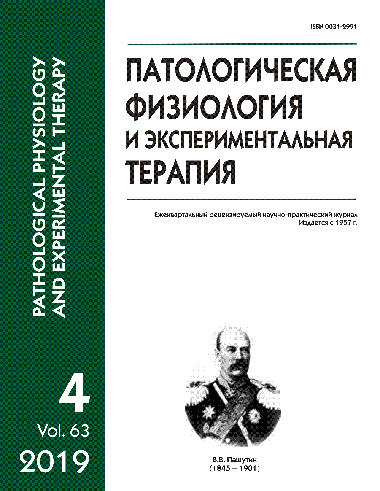Gender-related features of serum levels of molecular markers for arterial hypertension during development of prehypertension
Abstract
The aim of the study was to investigate features of the content of serum molecular markers for arterial hypertension in men and women with “optimal” blood pressure (BP) and prehypertension. Methods. The study evaluated 115 males (n = 49) and females (n = 66) aged 47.6 ± 0.7 with an “optimal” BP (120/80 mm Hg, n = 63) and prehypertension (120-139 / 80-89 mm Hg, n = 52). Serum concentrations of biomarkers, including peptides, angiotensin II, HLDF24, S100b protein, endothelin, and respective autoantibodies, and vascular endothelial vascular growth factor, were measured using ELISA with original and commercial kits. Serum concentrations of biomarkers were compared in men and women with “optimal” BP and prehypertensive subjects using mathematical analysis. Results. Serum concentrations of some molecular markers were significantly different in men and women with “optimal” BP and prehypertension. Endothelin levels and autoantibody titers to S100b were higher for men with prehypertension than with “optimal” BP. Furthermore, prehypertensive women had a significantly lower level of angiotensin II. However, both prehypertensive men and women had highly significant decreases in the level of HLOF24 compared to individuals with “optimal” BP. Conclusion. The observed gender features of biomarker levels apparently reflect key molecular events during the development of prehypertension in men and women of the studied age cohort. The study results are of interest for understanding pathogenetic mechanisms of prehypertension and for development of methods for its individualized correction.






